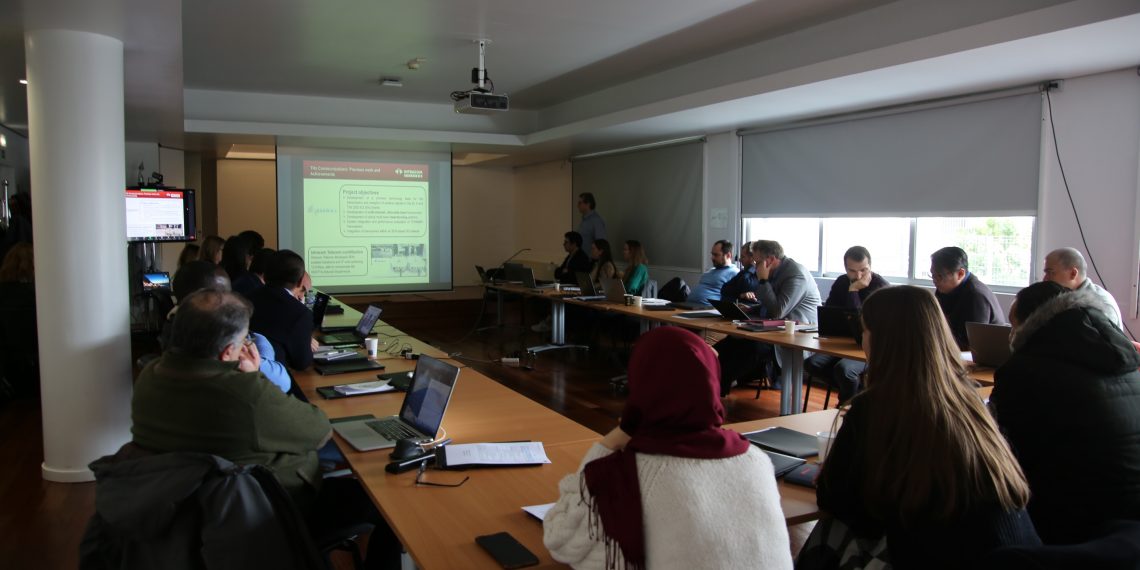Researching innovative technologies for the sixth generation (6G) of mobile communications, supporting the digital transition process of the European business ecosystem through the demonstration of Reconfigurable Intelligent Surfaces (RIS) THz – this is the main goal of the TERRAMETA project. Led by INESC TEC, the project brings together 13 European partners to carry out tests in telecommunications scenarios.
With the evolution of digital transition, the inability to ensure that current wireless technologies meet the data rate and latency requirements appropriate to the needs of companies and institutions becomes increasingly clear. In this sense, the TERRAMETA project – TERahertz ReconfigurAble METAsurfaces for ultra-high-rate wireless communications – aims to explore THz technologies as a potential solution.
“The TERRAMETA project aims to demonstrate the feasibility of high-speed wireless networks supported by RIS, exploring frequencies between 100 GHz and 300 GHz, which is completely in line with the trends identified for 6G”, explained Luís Pessoa, lead researcher at INESC TEC and professor at the Faculty of Engineering of the University of Porto, also stating that “in the near future, reconfigurable intelligent surfaces will revolutionise wireless communications, since the communications channels will also become controllable”. “Imagine that, in the future, all the surfaces that surround us – from floor to walls and ceilings – become intelligent, with computing capacity, sensing and supporting communications”, he stated.
The project aims to transfer the latest and most innovative technologies from THz RIS hardware to test and promote worldwide demonstrations for the THz communications network supported by reconfigurable intelligent surfaces, in practical application scenarios. Hence, it will be possible to demonstrate the feasibility of applying THz RIS in an “Industrial Edge” environment, and outdoor telecommunications scenarios with real equipment.
In practical terms, “the TERRAMETA THz network will allow, in an innovative way, to tackle the obstacles that prevent obtaining the range necessary to allow the wireless connection to THz between two points”.
According to Luís Pessoa, the main goal is “to ensure the retransmission of the signal through passive reflection in an installed RIS, e.g., on the interior or exterior wall of a building”.
The TERRAMETA project will address the development of new technologies according to three dimensions: transmissive and reflective reconfigurable intelligent surface architectures, with detection capability required for channel estimation, localisation and 3D mapping; Electronic material and components that can support the THz operating frequency with adequate performance, low manufacturing costs and reduced power consumption; and signal processing techniques for communications, localisation and detection using THz RIS.
“The technological advances achieved in the project could lead to the development of new products that go beyond the telecommunications market”, mentioned Luís Pessoa, “namely in use cases within cities, homes and smart factories”.
Regarding the latter, THz RIS-supported sensing can enable a better understanding of the shop floor, including the improved monitoring and tracking of people and objects’ mobility, production lines, forklifts, and other smart robots.
Besides INESC TEC, TERRAMETA features 12 other partners, with two Portuguese entities among them: the Nova University of Lisbon and the Institute of Telecommunications.
TERRAMETA started in 2023 and will last for three years. The European Commission allocated €6.3M to fund the TERRAMETA project.
The INESC TEC researcher mentioned in this news piece is associated with INESC TEC.




 News, current topics, curiosities and so much more about INESC TEC and its community!
News, current topics, curiosities and so much more about INESC TEC and its community!